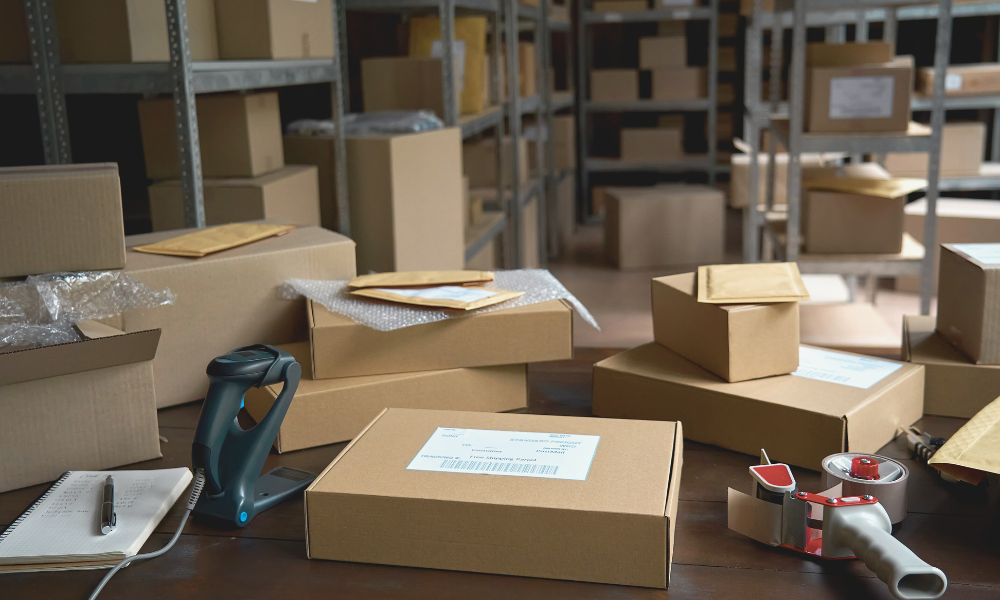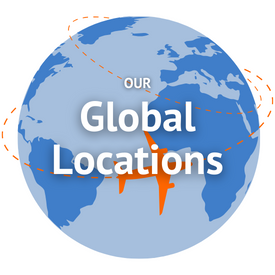This year—April to be exact—OnFulfillment will be celebrating its 25th anniversary. That’s a quarter century of helping companies around the world meet their marketing fulfillment, event management, printing, promotional swag, shipping, storage, and training needs, among others.
Of course, it didn’t start that way. Our origins were actually quite modest. But we’ve grown over the years, constantly honing our skills and enhancing our capabilities to offer the latest, most advanced marketing fulfillment services available.
It’s been quite a journey, and over the next several months, we’ll be using this blog space to explore where we started, how far we’ve come, and where we’re heading with respect to a number of disciplines, including printing, shipping, promotional products, event fulfillment, warehousing, pick-and-pack, and kitting.
In this inaugural entry, we’ll provide a brief overview of our history from 1999 through today. We’ll be visiting the other topics with new postings up through April.

In the Beginning: The Web
It all started in 1999 at a 1,000 square-foot warehouse in Campbell, CA, where OnFulfillment was founded as a distributor of printed materials and promotional items for local Silicon Valley companies. The valley was on a tremendous upward trajectory and these companies were growing rapidly, establishing a global presence in networking, semiconductors, and other burgeoning tech fields.
While OnFulfillment partnered with a third-party provider using traditional sheet-fed offset presses to do the actual printing, the method used for distributing the final product was leading edge. OnFulfillment was the first collateral distribution company to develop a web-based interface that allowed customers to review inventory, order reprints, and schedule deliveries—right from the desktop.
By launching the first online marketing resource in Silicon Valley, OnFulfillment demonstrated a willingness to experiment with new technologies that would revolutionize the industry. That spirit of innovation and experimentation, which included the introduction of databooks and information kits during this initial phase, has served the company well over the years.
The Next Phase: Conquering the World
Riding the technology wave, it didn’t take long for the business to take off. Within six months, OnFulfillment had outgrown its Campbell location and moved north to a larger 30,000 square-foot facility in Hayward, CA. After a brief dip following the dot.com bust in 2001, business rebounded and the company relocated to a 90,000 square-foot warehouse in Newark, Calif.
During this phase, OnFulfillment also adopted print-on-demand (POD) technology and opened its first onsite digital print operation in Newark. Digital POD allowed customers to print only the quantities they needed, when they needed them, dramatically reducing production and storage costs. By producing only what could be consumed, POD also virtually eliminated waste, offering a “green” solution for increasingly environmentally conscious companies.
 The introduction of POD and digital web-to-print technology also heralded a global expansion for OnFulfillment. By partnering with vendors around the world, OnFulfillment allowed customers to order POD services in 13 countries on six continents, all managed via a centralized print dashboard. The ability to print closer to the final destination significantly reduced shipping expenses while largely avoiding customs and value-added tax (VAT) issues. As a result, the time between ordering the material and delivery fell from possibly weeks to days or even hours.
The introduction of POD and digital web-to-print technology also heralded a global expansion for OnFulfillment. By partnering with vendors around the world, OnFulfillment allowed customers to order POD services in 13 countries on six continents, all managed via a centralized print dashboard. The ability to print closer to the final destination significantly reduced shipping expenses while largely avoiding customs and value-added tax (VAT) issues. As a result, the time between ordering the material and delivery fell from possibly weeks to days or even hours.
During this phase, OnFulfillment also introduced its training services offering, managing global education programs for customers such as Juniper Networks, Palo Alto Networks, Hewlett-Packard, and more.
Buckling Down: Life in the Trenches
Following the global financial crisis in 2008, OnFulfillment experienced another growth spurt, both in terms of size and capabilities.
During this phase, the company produced its first e-book and introduced one of the first online web-based training programs in concert with vendor WatchDocs. This innovation not only contributed to a tenfold increase in the training customer base, it offered a “green” solution that lowered the company’s carbon footprint and reduced printing requirements by 70%. New print hubs were also opened in several new locations, including Moscow, Riyadh, Saudi Arabia, and Johannesburg, South Africa. By distributing print functions around the world, OnFulfillment was able to reduce its local physical space requirements to 65,000 square feet and adopt the 3PL central (now Extensive) warehouse management software system.
To facilitate these changes, reduce reliance on third-party partners, and ensure ownership of its technology and intellectual property, OnFulfillment took a bold step by opening an independent software programming and development team in Portland, OR in 2014. This is the team that developed our sophisticated software platform—the enabling technology that allows our customers to build and customize a portal that serves as the cornerstone of their marketing, HR, training, and channel fulfillment infrastructure.
An in-house development team also meant OnFulfillment could better serve its customers by creating customized, scalable new solutions designed to address a specific request or requirement. Sometimes these developments could be achieved with a simple configuration change; sometimes they required writing a new plug-in, upgrading code, or developing new APIs. Regardless, the team allowed OnFulfillment offered a level of service that no competitor could match.
Once the development team was in place, OnFulfillment began making less-than-glamorous but necessary technological changes needed to remain at the forefront of the fulfillment industry. This included performing a FileOpen update, upgrading the Core Text programming interface in order to create more complex eBooks, and implementing the open-source nopCommerce e-commerce platform to deliver a more elaborate and modern web-based store.
To complete the updates during this phase, OnFulfillment—a Microsoft shop—moved its operations to the Azure Cloud and achieved SOC compliance, ensuring customers we maintain the highest levels of information security.
Expanding Our Reach: Moving to the Cloud
Over the past five years, OnFulfillment has focused on expanding its offerings as well as its reach.
 As life returned to normal following the COVID 19 pandemic, we significantly expanded our event management program with comprehensive fulfillment, support and execution services that help customers plan, manage, and run multiple in-person, virtual, and hybrid events right from their OnFulfillment software portal. Thanks to these new services, and taking advantage of the huge event comeback following two years of lockdowns, we added 22 new clients in 2023—a record year.
As life returned to normal following the COVID 19 pandemic, we significantly expanded our event management program with comprehensive fulfillment, support and execution services that help customers plan, manage, and run multiple in-person, virtual, and hybrid events right from their OnFulfillment software portal. Thanks to these new services, and taking advantage of the huge event comeback following two years of lockdowns, we added 22 new clients in 2023—a record year.
We also introduced a sophisticated redemption program utilizing the latest web-based technology, enabling users to execute complex giveaways with surgical precision. From initial outreach to final shipping, the program helps our customers target prospects and recipients with customized offerings while reducing, if not eliminating, exploitation.
Finally, after joining the Facilis buying group and becoming a promotional materials distributor, we integrated our end-to-end global offering into a single webstore platform and consolidated our promotional merchandise into a single market available anywhere in the world.
The cloud was the enabling technology, giving us the ability to share the same services and capabilities with all our customers, regardless of their location—whether they were across the street, across the country, or across the globe.
To keep pace with demands, we also expanded our physical footprint, opening new offices, a 70,000 square foot storage facility, and a state-of-the-art digital print center in West Sacramento, CA. By 2023, due to its convenient access to all forms of shipping, West Sacramento had become our main distribution center.
Looking Ahead: The Future
What’s in store for the next phase OnFulfillment? There are plenty of opportunities for improvement. Current plans call for more software upgrades, enhancing our digital asset management (DAM) system, and upgrading our eBook and ePub capabilities. Those are the near-term objectives.
Beyond that? We’ll see where technology—and our customers—take us. As marketing fulfillment continues to evolve, we’ll be there at the crest of the wave, looking for new ways to help our customers simplify and improve their printing, shipping, storage, event management, and marketing campaign capabilities. Not to mention offering new services that no one has even conceived of yet.
Coming Up
What we’ve covered here is just the tip of the iceberg. Watch this space for more detailed reflections on how our various services have evolved over the past quarter century.


